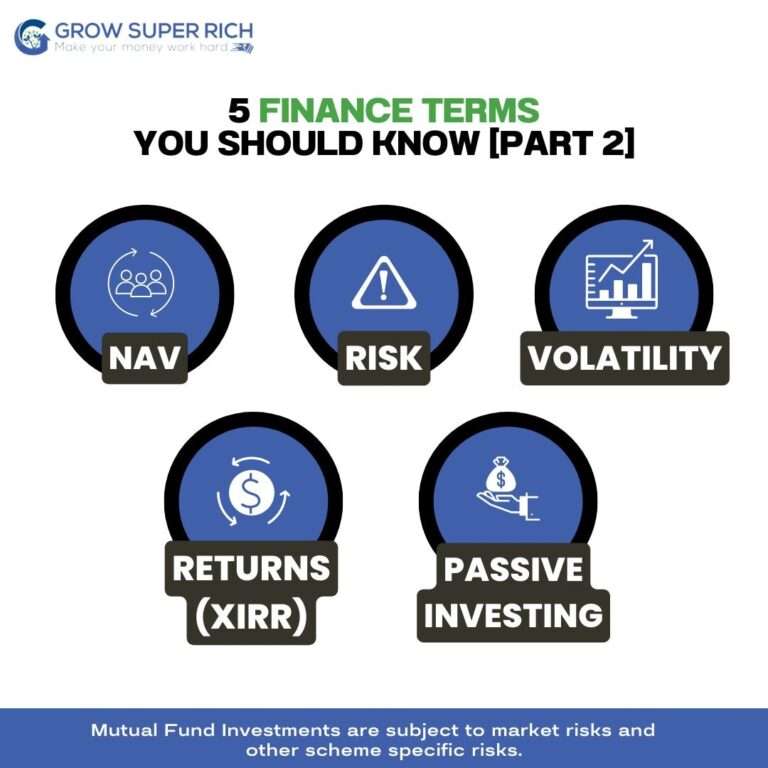Introduction
Investing right is a game changer in the way you grow your money and reach your financial goals. However, for a first-time investor, it will be quite intimidating to navigate through the complexities of getting started. This post focuses on some key things a first-time investor needs to focus on
Any new start needs a set of disciplines and knowledge to set yourself up for success. Some of the key things we cover here will help you define your goals, educate yourself, start small, diversify your portfolio, and stay disciplined and patient as your investments and time work their magic.
Define Your Goals :
Quite at the top of the list are goals. Why? Unless you know your destination, it is difficult to choose a path. Goals define what success means to you and unfurl the sails of your investment journey. They provide the necessary motivation or “why” factor for why you are investing in the first place. The first step to investing is to give concrete shape to your investment goals. What are you saving for? Retirement? A down payment on a house? A dream vacation?
Goals and their timeframe help define a sharper and purposeful investment strategy. Your strategy will depend on your goal’s time horizon, the amount of investment you can make, and the level of investment risk you can take. All these are details that can only be fleshed out once you have a basic understanding of the scale and timeline of your goals.

For example, if you’re saving for retirement, you’ll need to invest for a long period of time. This means you can afford to take on more risk, as you have time to recover from any losses. This also means time is on your side, and the power of compounding long-term growth rates of stocks can be factored in.
If you’re saving for a shorter-term goal, such as a down payment on a house, you’ll need to take on less risk. This is because you won’t have as much time to recover from any losses. And this means you need to stay invested in assets with lesser volatility and rely on bonds to tide over immediate needs.
So, goals overall shape the contours of your investment portfolio, so spend a good amount of time defining and shaping them.

Educate Yourself : Learn Investment Options and your risk tolerance
As important as it is to know your goals, it’s important to educate yourself about the different investment options and the key pros and cons of each. Although investment education can be a lifelong process, it is important to understand the top-level differences of different investment classes like equity, debt, gold, and real estate, and their pros and cons. The risk and suitability of each for your different goals.
A good starting point is a credible investment blog or resource like this one. And closely following and asking relevant questions of your MFD/Investment advisors on the rationale of the investment and how they fit into your goals will help you improve your knowledge. This education process will also help you choose the right partner in your investment journey.
It is also important to understand your own behavioral hotspots when you have made investments and how you react to different market scenarios. This will help feed into and decide your future course of action in terms of how you need to invest considering your behavioral responses and have process-based decision making. A good MFD/Investment advisor like GrowSuperRich, who has been through the journey and viewed this across different customers and market cycles, can be a valuable ally in the process of investment journey and an educative process.
Start Small, but Start Now : Act on Knowledge
When Warren Buffet started investing, it is said that his dad told him, “Markets are at their peak.” So any point in time will seem like not the perfect moment to start investing. But basing our investment journey on external factors needs to be avoided.
The basic understanding to have is that time is your ally, as outlined in the blog on compounding. So the sooner you start investing, the longer your money has to grow. This is because of the power of compounding where over time your growth gets exponential. And any volatility can be ridden through over a period of time.
Don’t wait until you have a large sum of money to start investing. Even if you can only invest a small amount each month, it will add up over time. A good behavioral trick is to have an automated investment approach like a Systematic Investment Plan (SIP).


Diversify Your Portfolio : Earn Free Lunch
One of the key tenets of investing is the concept of a Free Lunch. In general, there is no Free Lunch available in investing. Meaning you need to take some additional risk to attain higher returns. However, there is one free lunch that is recognized by financial experts – Diversification.
Diversification means investing in a variety of different assets such as stocks, bonds, and real estate. Each investment has different risk and return characteristics, and performance varies in different time periods. Combining them into a single portfolio plan will provide a balanced risk with potentially higher overall returns, which is the promise of the free lunch of diversification.
For example, if you are invested across stocks and bonds, if the stock market crashes, your bond and real estate investments may help offset your losses, or you can plan to not book losses on stock investments as you have the cushion of bonds. Net net, diversification will be your key savior in moments of investment challenges.
Stay Disciplined and Patient : Stay the course
Investing is a long-term game, and there is long-term money to be made by not making decisions based on short-term factors, like exiting investments in a panic. One of the basic expectations is that returns are accompanied by risk, and the risk of investing in growth investments like equity gets reduced with longer holding time. So one key thing to work on is our expectation of time scales and volatility of our investment returns. Fundamentally, do not come to the investment journey with an expectation of getting rich quick. It takes time and patience to build wealth through investing.
There will be ups and downs in the market. But if you stay disciplined and patient,and maintain your portfolio within your risk tolerance you will eventually reach your financial goals.

Summary
Thus, there are five essential things that first-time investors need to be aware of and build into their financial journey. By reviewing and internalizing these key points and incorporating them into your investment journey, you can set yourself up for long-term success.
So define your goals to unfurl your investment journey, educate yourself to know what to expect, start small, but start now, and diversify your portfolio. Once all of this is done, the next key thing is to stay disciplined and patient as your portfolio does its work.
Note :- If you need personalized help to follow these key ideas, please reach out to us to stay on course to your goals.




